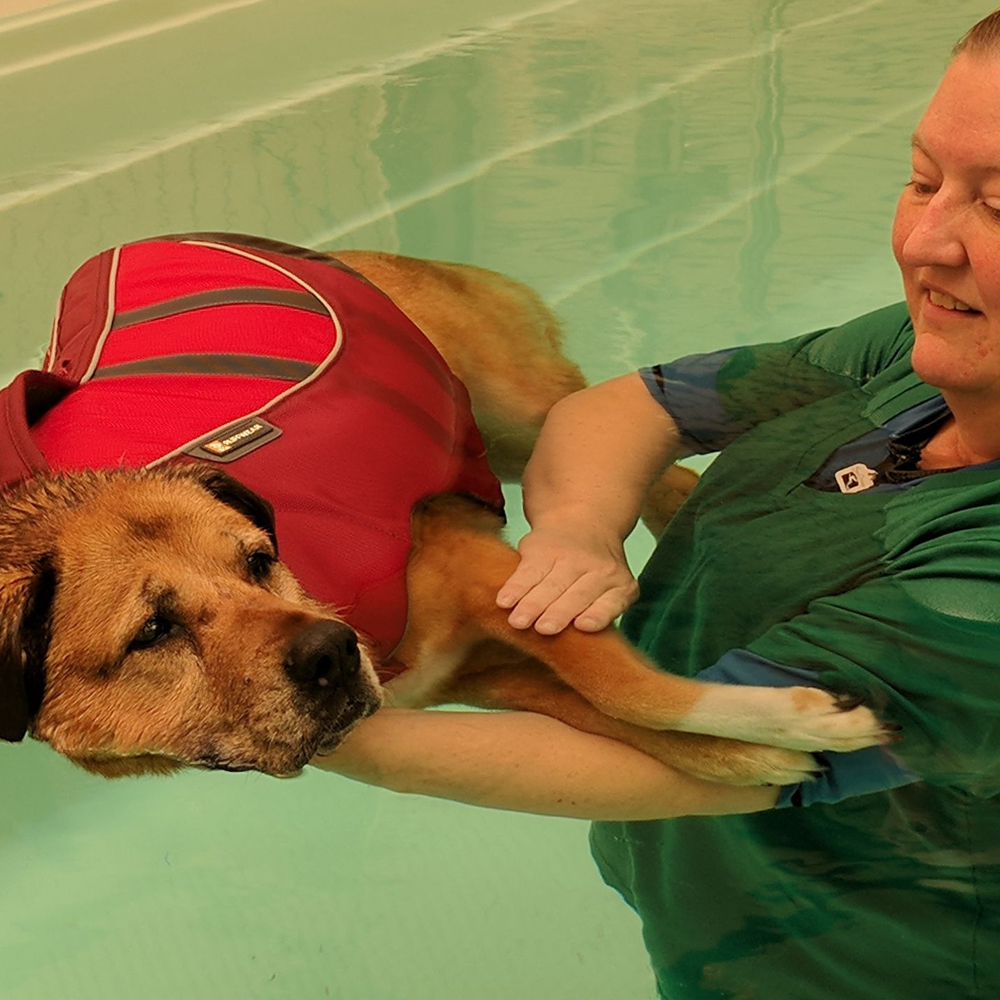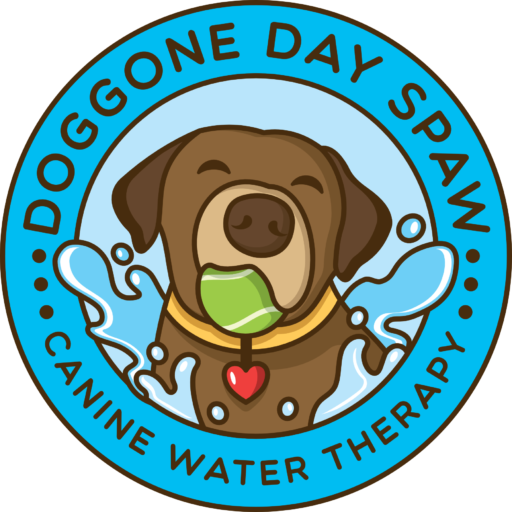Is Your Dog in Pain?

“Rufus doesn’t want to go for rides in the car anymore because it’s too hard to get in and out of the vehicle.” “Sebastian used to love sleeping with us, but now he can’t even get up on the bed.” “Gertie is putting on weight, and we can’t seem to slim her down because she’s just not as active as she once was…” “Sarah just can’t climb the stairs anymore to be in the same room with the rest of the family.”
Does any of this sound familiar? Does your dog have a hard time getting up from a sitting or laying position? Does he or she walk while they’re going poop, instead of remaining in one place? (My friend, Shannon, calls this “the dump-and-dash”!) Is she refusing food or eating less than usual?
These could be subtle indications that your canine friend is having some pain issues, and there could be many causes. First things first, always speak to your veterinarian to get a diagnosis of what the specific problem/disease is. Find out what is causing the pain, and seek out ways you can support your pet.
Osteoarthritis is probably the single most common disease seen in my geriatric canine clientele. And there are so many ways to provide support to your dog in this case!

- Canine Water Therapy (Obviously! Wink!)
- Massage
- Acupuncture
- Aquapuncture or Biopuncture (Traumeel or Vitamin B12 May Be Used)
- Chiropractic
- Laser Therapy
- Homeopathy
- Nutrition
- Glucosamine and Chondroitin
- Medications
- Essential Oils
- Mobility Aids
Each of these methods of support can be used individually or together. It all depends on what works best for your canine companion. Each body’s “chemistry” is different and therefore will respond differently to each modality. Finding the right combination for your dog may take some time, some trial and error. But once you find the right blend, the benefits are immeasurable!
When it comes to some of the “alternative” and or “complimentary” modalities, just be sure you are keeping an open mind. It’s sometimes hard to understand that these types of care may need multiple treatments to be effective. My recommendation is to try a particular modality 3-5 times before making a decision as to whether it’s beneficial to your dog. In addition, you might also consider trying a different practitioner before deciding that a certain technique doesn’t work.
I have personal experience with this! Since my husband and I rescue senior dogs, we have worked with multiple veterinarians and holistic practitioners over the years. Several years ago, a wonderful Chocolate Labrador named Watson came into our lives. We lovingly referred to him as “our orthopedic nightmare.” This poor boy had terrible joints – both shoulders had severe Osteoarthritis. His right knee had had surgery at some point in his life, but it didn’t hold – probably due to his large size. He also had neurological impairment where he knuckled his left rear foot and drug the leg. And last-but-not-least, he had severe Laryngeal Paralysis (LP). To say the least, this beautiful boy was a MESS!

Being a professional Canine Water Therapist, I of course, opted first for swimming as a means of support and pain management for him. Turned out, he was absolutely terrified of the water – which broke my heart. Next up, we tried acupuncture, as we had good success with previous pets. After three sessions with one of my acupuncture vets, the results were unremarkable. Took him to another veterinary acupuncturist, and he responded beautifully – better mobility, less pain, even help with his LP breathing difficulties.
For me, the moral of the story is that it sometimes takes some extra effort to find the right treatments for each particular pet. Each provider is trained at a different school, and practices different theories. The fact that Watson did not respond to acupuncture from the first vet did not mean that this modality wasn’t right for him. We gave it one more shot, and it worked. (The first vet did nothing wrong. I had used him successfully with previous dogs and will still go to him for current and future dogs. He just wasn’t the right fit for Watson. Kind of like choosing a doctor for yourself – just because he or she works for your friend doesn’t mean he’s going to work for you!)
In Watson’s case, we ended up doing a combination of acupuncture, chiropractic, massage, medications, supplements, and mobility aids. (Pretty much everything except Canine Water Therapy.)
Find the right blend for your dog! Stay tuned for my series of articles regarding pain management in senior dogs!

